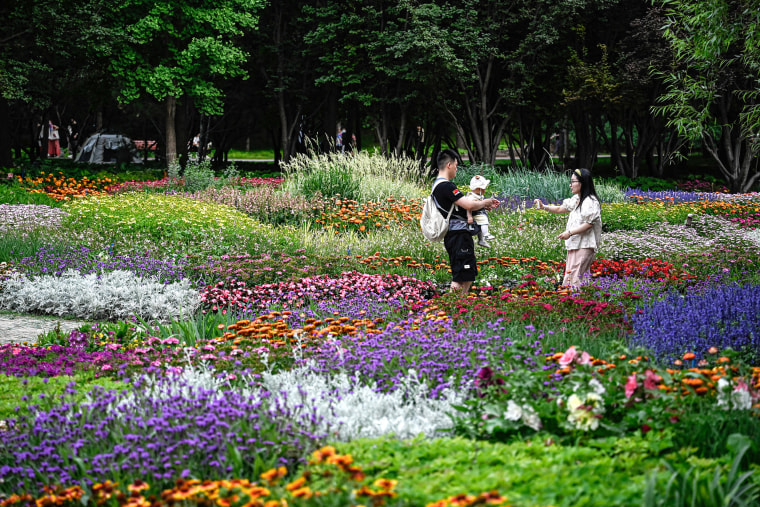China’s teeming cities get greener and cleaner in nationwide parks campaign
The importance of green space in cities across China has become more apparent in recent decades as rapid urbanization was accompanied by suffocating pollution that in Beijing peaked around 2013. Though air quality has since improved, parks provide welcome respite from the fast pace and relentless traffic of sprawling cities such as Beijing, especially for young people pushing back against China’s intense working conditions.
This spring, the hashtag “20-minute park effect” was popular on Xiaohongshu, China’s equivalent of Instagram, where users posted photos of themselves picnicking next to lakes or basking in the sun on benches.
The public desire for parks was reinforced by three years of some of the strictest Covid-19 restrictions in the world, including lockdown periods in Shanghai and other cities, during which tens of millions of people were largely confined to their homes.
Some outdoor lovers are now making up for lost time.
“During the pandemic, it was risky and challenging to go out, and many people avoided doing so,” said a woman with the last name Zhan while visiting the Jingzhang Railway Heritage Park in northwestern Beijing.
Now, she said, “not only are more people going for walks, but there is also an increase in outdoor activities and travel.”
Zhan, 26, who like many in China declined to give their full name to a reporter, said she felt Beijing’s environmental quality was “much better” than before the pandemic.

“People used to joke that the sky would only turn blue when there was a meeting or a major event,” she said. “However, in the past three years, I feel the air quality has been quite good.”
The Jingzhang Railway Heritage Park, which opened last year and features a historic train carriage, stretches for more than 5 1/2 miles and was built on the old tracks of the Beijing-Zhangjiakou Railway, China’s first independently built rail line. Chinese state media reported that the park was inspired by the High Line in New York.
Zhu Lixia, a retired Chinese teacher who lives nearby, said the railway park has “made our lives better.”
“We can play whenever we want, see if there are any activities to join,” she said. “One day, they even offered a calligraphy class in the park, and we all went. People also bring speakers here to sing.”
Before it opened, she said, “there was nowhere to go.” She would go to more distant places such as the botanical garden, the Old Summer Palace and Yuyuantan Park.
“I just feel happier and more relaxed when I come to this park,” she said.
Liu, who helped to plan and design the railway park, said it was a good example of a linear park that connects different spaces. Unlike many other parks in Beijing, he said, the park is not enclosed by a physical wall, opening it up to the urban areas around it.
“This not only integrates the city as a whole, but also catalyzes the renewal and development of the surrounding neighborhoods,” he said.
Liu acknowledged that after years of feverish construction, “we can’t simply keep building more parks indefinitely.”
“The focus now should be on properly operating and maintaining the existing parks,” he said, “adding more facilities and activities to encourage greater usage by the general public.”




